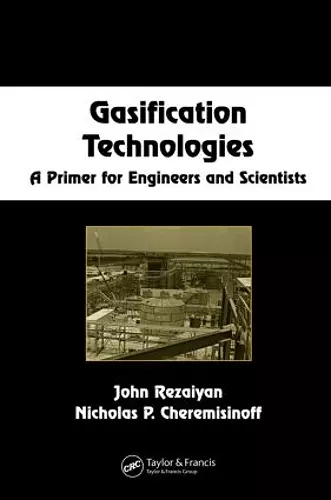Gasification Technologies
A Primer for Engineers and Scientists
Nicholas P Cheremisinoff author John Rezaiyan author
Format:Hardback
Publisher:Taylor & Francis Inc
Published:8th Apr '05
Currently unavailable, and unfortunately no date known when it will be back

In contrast to traditional combustion, gasification technologies offer the potential for converting coal and low or negative-value feedstocks, such as petroleum coke and various waste materials into usable energy sources or chemicals. With a growing number of companies operating and marketing systems based on gasification concepts worldwide, this book combines the latest information and real-world experience in developing gasification technologies.
Gasification Technologies: A Primer for Engineers and Scientists discusses gasification techniques and the benefits of each technology, including gas clean-up technologies and those used in hybrid systems and fuel cells. It also accounts for the primary products that are recovered and explains how these products are purified and can be used as fuel or for applications in petrochemical processes. The book describes the conditions in which optimal value intermediate products can be recovered, focusing on key factors such as oxygen or air blown reactor, operating temperature, internal and external heating, and reactor design. The authors also establish how gasification can help meet renewable energy targets, address concerns about global warming, and contribute to a better carbon management or achieving Kyoto Protocol commitments.
Gasification Technologies provide a multidimensional and well-rounded examination of current technology, research, applications, and development challenges for the commercialization of this increasingly popular technology.
“In this book, the authors discuss (in my opinion extremely thoroughly) gasification techniques that can be carried out in one of many different reactor configurations such as: fixed be; fluid be; bubbling, circulating, entrained win bed; moving bed; rotary kiln; and cyclonic. Each technology is discussed to provide the reader with a working knowledge of the process as well as a view of each system’s advantages and disadvantages. … the whole book is resplendent with cost data and analysis of the operation and advantages of the system reviewed. …”
— Gary F. Bennett, Department of Chemical and Environmental Engineering, The University of Toledo, United States, in Journal of Hazardous Materials, Nos. 205-208, 2006
ISBN: 9780824722470
Dimensions: unknown
Weight: 830g
358 pages